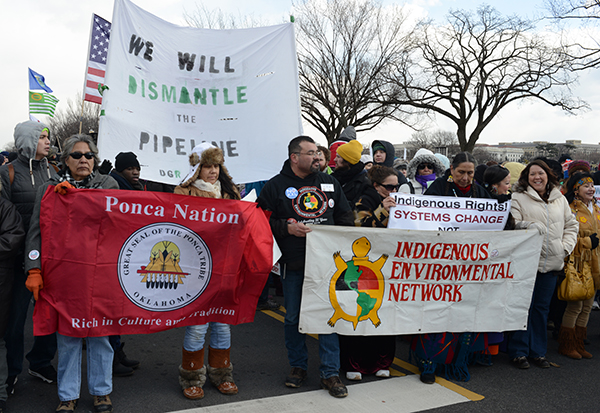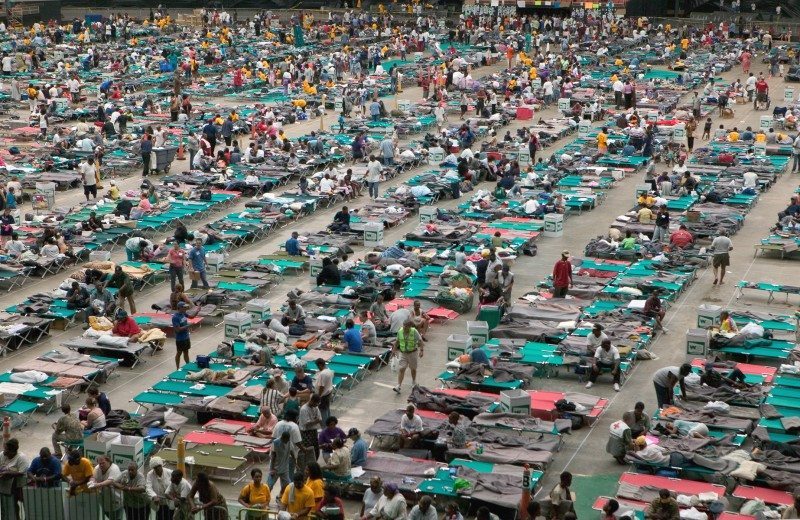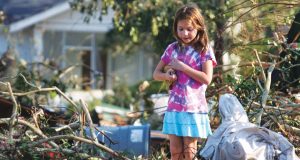Inequity
[perfectpullquote align=”full” bordertop=”false” cite=”” link=”” color=”” class=”” size=””]Who is most at risk of suffering from the mental health consequences of climate change?[/perfectpullquote]
People in Risk-Prone Areas and Certain Occupational Groups
Some parts of the world are geologically more vulnerable to climate change threats such as storms, droughts, rising sea levels, and wildfires. All who live in these risk-prone areas will be negatively affected.

However, most at risk are communities in which people’s livelihoods are directly tied to the natural environment, through agriculture, fishing, or tourism. Other lines and fields of work directly exposed to the impacts of climate change are also at risk. These occupations include first responders, construction workers, health care workers, transportation workers, and utility workers. Emergency workers and first responders face increasingly hazardous conditions and are exposed to deaths, injuries, diseases, and mental stress, leaving them at an increased risk for mental health consequences.
Indigenous Communities and People of Color

People of color are often more exposed and vulnerable to environmental hazards and extreme weather events. Communities of color also often lack resources to mitigate the effects of the climate crisis. This affects their ability to deal with the aftermath of an environmental disaster due to economic status, outdated infrastructure in their neighborhoods, and reduced access to healthcare.
Indigenous communities are at risk of losing their cultural heritage, as well as their homes. For example, Native Alaskans, Inuit tribes, and other Indigenous peoples whose lives revolve around sea ice and other changing climates could potentially lose not only their way of life, but also their cultural and personal identity. Also, at risk of disappearing is the traditional environmental knowledge about the specific local ecosystems, knowledge that can help us as a broader society adapt to the consequences of climate change.
Economically Disadvantaged Communities
Lower-income communities are more likely to have outdated infrastructure and have less capacity to adapt to the challenges brought by climate change. They are less able to evacuate should there be a natural disaster and are more exposed to harmful conditions created by heat waves and poor air quality. In addition, they have more fragile overall health, reduced mobility, reduced access to health care, and economic limitations that prevent the ability to buy goods and services that mitigate mental health risks.
Especially at risk are people who are homeless. High rates of mental illness among homeless populations and the geographical location of the homeless in urban areas make them very vulnerable to the effects of extreme heat, such as increased incidence of disease and death, aggressive behavior, violence, and suicide. As extreme weather events become more frequent and severe, people who are homeless and those who become homeless due to these disasters, are at increased risk for post-traumatic stress symptoms.

People with Pre-existing Physical and Mental Illnesses
Individuals of all ages with disabilities or chronic mental or physical health issues may experience climate-related impacts at a greater extent. Individuals with mental health and stress-related disorders, such as PTSD, depression, anxiety, sleep difficulties, and those who abuse drugs or alcohol, can experience an exacerbation of symptoms following a traumatic event. During and after a disaster, infrastructure is damaged, communication lines are weakened, and mental health services and personal support networks are disrupted, leaving those with a mental illness vulnerable to experiencing additional negative mental health consequences. People living with physical disabilities and health conditions also have disproportionately lower access to aid during and after climate-related disasters.
Women, Children, and the Elderly

Children have been shown to possess an innate resilience to adversity, however they are at particular risk for distress, anxiety, and other adverse mental health effects in the aftermath of an extreme event, though symptoms will depend on the developmental stage of the child, the level and type of exposure, and that particular child’s risk factors. Significantly more children than adults have shown long-term PTSD and chronic stress symptoms, putting them more at risk for developing mental health conditions later in life.
The climate crisis is taking a toll on the mental health of young people. In the age of social media and fast-spreading news, children are aware of the urgency of climate change. Faced with a future on a dying planet, young people are more likely to experience eco-anxiety and eco-grief.
Post-disaster stress symptoms are reported more frequently by women than men. Women have higher prevalence of PTSD and other mental health disorders after disasters than men and are prone to greater worry and feelings of vulnerability, anxiety disorders, and other adverse mental health outcomes.
The elderly are more at risk of mental health consequences after a disaster due to challenges they face with physical health, mobility, and difficulty managing trauma.